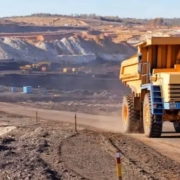⚠️ IMPORTANT LEGAL DISCLAIMER:
The information provided on this page related to Private Equity and Institutional Investment is for general informational purposes only. This does not constitute legal, financial, or investment advice. Oil and gas laws, mineral rights regulations, and royalty structures vary significantly by state and jurisdiction. While we strive to provide accurate and up-to-date information, no guarantee is made to that effect, and laws may have changed since publication.
You should consult with a licensed attorney specializing in oil and gas law in your jurisdiction, a qualified financial advisor, or other appropriate professionals before making any decisions based on this material. Neither the author nor the publisher assumes any liability for actions taken in reliance upon the information contained herein.
Mineral rights represent one of the most unique and often overlooked opportunities in global investment markets. These rights grant ownership or control over subsurface resources such as oil, natural gas, coal, metals, and industrial minerals. Unlike surface rights, which cover land use for farming, building, or development, mineral rights specifically concern the extraction and commercialization of valuable underground commodities.
For decades, mineral rights were primarily held by landowners, independent operators, and energy companies. However, the financial world has taken notice of the significant and relatively untapped potential of these assets. In particular, private equity firms and institutional investors have become increasingly active participants in the mineral rights market. Their involvement has introduced new levels of sophistication, capital, and long-term strategy into a field once dominated by smaller players.
This article explores the growing role of private equity and institutional investment in mineral rights, the strategies employed, the opportunities available, and the challenges investors must navigate.
The Appeal of Mineral Rights for Private Equity and Institutions
Private equity and institutional investors are always seeking opportunities that deliver strong returns while offering diversification from traditional stocks and bonds. Mineral rights fit this profile for several reasons.
First, mineral rights provide a direct link to commodity markets. As global demand for energy and raw materials continues to rise, the value of these rights can appreciate significantly. This allows investors to capture gains tied to resource consumption trends.
Second, mineral rights generate steady cash flows through royalties. When operators extract oil, gas, or minerals, royalty owners receive a portion of the revenue without bearing operational risks. This passive income stream is highly attractive to investors looking for consistent yields.
Third, mineral rights often have favorable tax advantages, particularly in jurisdictions where depletion allowances and other incentives apply. These benefits can enhance net returns and make mineral rights even more appealing compared to other real assets.
Finally, mineral rights are resilient to inflation. As commodity prices increase with inflationary pressures, royalty payments typically rise, providing a natural hedge for investors.
Private Equity Strategies in Mineral Rights
Private equity firms bring a variety of strategies to mineral rights investment. Their role is not limited to purchasing rights and collecting royalties. Instead, they apply capital, management expertise, and structured deals to maximize returns.
One common approach involves aggregation. Private equity firms identify fragmented mineral rights holdings, often owned by families or small landholders, and consolidate them into large portfolios. By creating scale, firms improve bargaining power with operators and unlock efficiencies in management.
Another strategy is structuring joint ventures with exploration and production companies. These partnerships provide operators with capital for drilling and development while ensuring private equity investors receive favorable royalty or working interest terms.
Private equity firms also engage in opportunistic acquisitions during commodity market downturns. When oil or gas prices fall, smaller holders may be willing to sell mineral rights at discounts. By purchasing in weak markets and holding for the long term, firms position themselves for outsized gains when prices recover.
Finally, private equity firms often employ financial engineering, including securitization of royalty streams, to enhance liquidity and create new investment products for institutional clients.
The Role of Institutional Investors in Mineral Rights
Institutional investors—such as pension funds, insurance companies, and endowments—are increasingly allocating capital to mineral rights. Their motivations differ slightly from private equity firms, though there is significant overlap.
For institutions, mineral rights represent a source of long-duration, stable cash flow. Pension funds in particular seek predictable income streams to match their long-term liabilities. Royalties from mineral rights align perfectly with this need.
Institutions also view mineral rights as a form of real asset exposure. Alongside real estate, infrastructure, and farmland, mineral rights diversify portfolios and reduce dependence on equities and fixed income.
Endowments and sovereign wealth funds, which often have broader mandates to preserve wealth across generations, are particularly drawn to the inflation-hedging qualities of mineral rights. These investors are less concerned with short-term price swings and more focused on the ability of mineral rights to deliver value over decades.
In some cases, institutions participate directly by purchasing mineral rights. In others, they allocate capital to private equity funds or specialized managers who focus exclusively on the mineral rights sector.
Revenue Streams from Mineral Rights Investments
The financial appeal of mineral rights lies in the multiple revenue streams they can generate.
The most common revenue comes from royalties, which are payments based on a percentage of production revenues. Once a well or mine is producing, royalty owners benefit from steady income without incurring costs associated with drilling, equipment, or labor.
Bonus payments are another source of revenue. These payments are made upfront by operators when mineral rights are leased for exploration. Although bonuses are not recurring, they can provide significant initial returns for investors.
Lease payments, often structured as annual rentals, also contribute to income, especially if operators delay development.
Finally, mineral rights holders may capture value through appreciation. As commodity prices rise or new technology makes resources more accessible, the underlying rights can increase significantly in market value.
Risks and Challenges in Mineral Rights Investments
While mineral rights present compelling opportunities, they also carry unique risks that private equity and institutional investors must address.
One of the most prominent risks is commodity price volatility. Mineral rights income is tied directly to the prices of oil, gas, or minerals. Sharp declines can reduce royalty payments and impair asset values.
Regulatory and environmental factors also pose challenges. Governments may impose stricter regulations on resource extraction, increase royalty rates, or limit development due to environmental concerns.
Operational dependency is another risk. Mineral rights owners rely on operators to efficiently and safely extract resources. Poor operator performance, mismanagement, or bankruptcy can disrupt revenue flows.
Liquidity is a further concern. While mineral rights can appreciate in value, selling them is not as straightforward as selling publicly traded stocks or bonds. Transactions often require specialized buyers and can take significant time.
Finally, investors must contend with complex legal frameworks. Ownership disputes, unclear title records, and varying jurisdictional laws can complicate transactions and expose investors to legal risk.
Technology and Innovation in Mineral Rights Investments
Advances in technology are reshaping the mineral rights sector and creating new opportunities for investors.
Data analytics and artificial intelligence allow firms to evaluate the potential productivity of mineral rights with greater accuracy. By analyzing geological data, production trends, and operator performance, investors can better predict cash flows and reduce uncertainty.
Blockchain technology is also being explored for title verification and transaction transparency. This innovation could significantly reduce legal disputes and streamline the acquisition process.
Enhanced extraction technologies, such as horizontal drilling and hydraulic fracturing, have already expanded the value of mineral rights by unlocking previously inaccessible reserves. Future innovations are likely to further increase the commercial potential of existing holdings.
Digital platforms are also emerging to facilitate mineral rights transactions, making the market more accessible and liquid. These platforms could broaden participation and drive additional institutional capital into the sector.
Environmental, Social, and Governance Considerations
Institutional investors, in particular, are increasingly guided by environmental, social, and governance (ESG) principles. Mineral rights investments must be assessed not only for financial performance but also for alignment with sustainability goals.
On the environmental front, investors must evaluate the carbon footprint of resource extraction tied to their rights. Some institutions may prefer to back operators that prioritize low-carbon technologies or invest in carbon capture.
Social considerations involve the impact of resource development on local communities. Job creation, safety practices, and fair revenue distribution all play roles in determining whether a mineral rights investment aligns with broader social goals.
Governance is equally critical. Investors must ensure operators adhere to ethical business practices, transparency, and compliance with regulations. Poor governance can create reputational risks that undermine long-term returns.
As ESG principles continue to shape global investment, private equity and institutional players in mineral rights will need to adapt their strategies to balance financial goals with broader responsibilities.
Comparison to Other Real Asset Investments
Mineral rights occupy a unique space within the universe of real asset investments.
Unlike real estate, which generates income through rent and appreciation, mineral rights tie revenue directly to commodity markets. This makes them more volatile but also potentially more rewarding during periods of strong demand.
Compared to infrastructure, mineral rights do not require the same level of capital expenditure for development. Investors capture revenue without building pipelines, power plants, or roads.
Farmland provides steady returns through agricultural production, but it is more dependent on weather and crop cycles. Mineral rights, while still influenced by natural factors, have broader global market dynamics that often drive value.
In many ways, mineral rights combine elements of all these asset classes while offering distinct exposure to global resource trends.
The Future of Private Equity and Institutional Involvement
The trajectory of private equity and institutional investment in mineral rights is likely to continue upward as global demand for resources persists.
Emerging markets are driving increased consumption of energy and raw materials, creating long-term support for mineral rights values. Simultaneously, supply-side constraints, including limited exploration in certain regions, are enhancing the scarcity value of these assets.
Technology will play a crucial role in making mineral rights more accessible and transparent, further attracting large pools of capital. As legal and regulatory frameworks evolve, the sector may become increasingly institutionalized, with standardized contracts, digital platforms, and global trading systems.
The interplay between sustainability goals and resource needs will also shape the future. Institutions will likely focus on mineral rights that align with responsible development and low-carbon initiatives, creating a new niche within the broader market.
Mineral rights are emerging as a powerful asset class for private equity and institutional investors seeking diversification, stable income, and long-term value. These assets provide exposure to global commodity markets, inflation protection, and attractive cash flows, making them highly competitive with other real asset categories.
However, success in mineral rights investment requires careful navigation of risks, including commodity price volatility, regulatory changes, and operational dependency. Investors must also adapt to the growing importance of environmental, social, and governance considerations.
With the right strategies, private equity and institutional investors can unlock substantial opportunities in mineral rights, balancing financial performance with long-term sustainability. As the global economy continues to rely on natural resources, the importance of these investments will only grow, cementing mineral rights as a key frontier in modern portfolio management.











